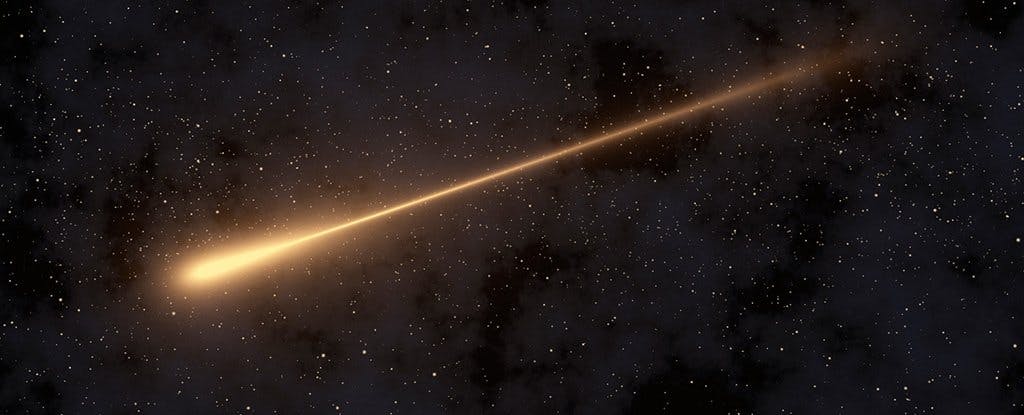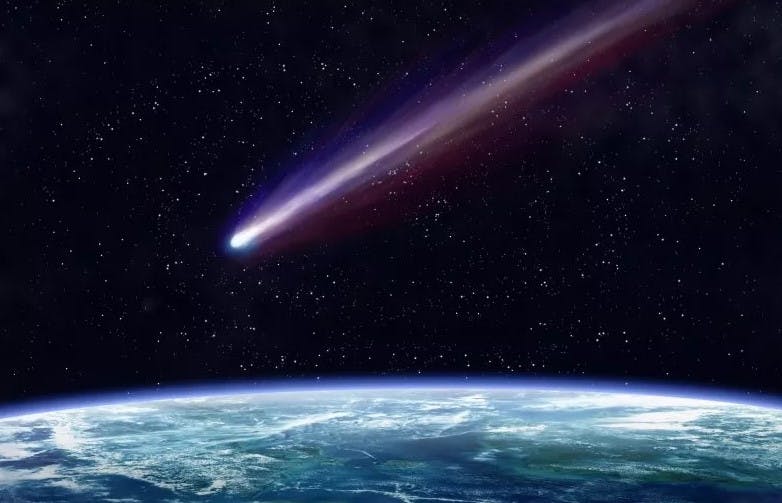HOW A DISTANT SUN COULD RAIN COMETS UPON EARTH
Amidst the vast emptiness of space, the skies rarely trouble most earthlings beyond furnishing poetic inspiration. Yet concealed in the abyss, deadly remnants from our solar system’s birth slowly circle in the darkness. Now improved projections reveal one wandering star may soon unleash these frozen time capsules toward our planet once more threatening a star apocalypse.
The historic flyby may not directly imperil major planets. But scientists warn the unwelcome visitor could bombard Earth with devastating comet strikes. That is if anyone is still around to witness its arrival in just over a million years.
As with any long-range forecast, uncertainties persist in the exact details. However, steadily refined celestial measurements trace an eerie trajectory near enough to disturb icy debris littering the solar system’s outer limits. The resulting meteor shower may dwarf recent close calls while ushering catastrophe not glimpsed in ages.
Join us as we review updated projections surging through the scientific community of an impending “star apocalypse” foretold. One seemingly aiming to give fate a nudge toward rebooting the clock on intelligent life’s future on Earth.

THE ROGUE STAR HEADED OUR WAY
Currently cruising through the obscure northern constellation Serpens Cauda resides Gliese 710 – an ordinary “K-type” orange dwarf destined for extraordinary proximity to our corner of the Milky Way.
The star was first identified 25 years ago. As it was approaching our solar system it was estimated that it will arrive around 1.4 million years. At such distance measuring barely beyond Pluto’s yearly trek around the Sun, researchers initially minimized concerns over planetary disruption.
Yet they noted even remote interference may unleash unpredictable chaos in the spherical Oort Cloud. That is the region enveloping our stellar neighborhood in icy remnants 4 light-years wide. This frozen halo houses perhaps a trillion shrouded comets. So a single foreign star could spark a meteor maelstrom raining down destruction.
Now as space agencies refine our galactic position, Gliese 710’s updated transit through the cloud will brings its blurring 62 light-year path over five times nearer than once believed. And at its heart lies Earth – directly in the path of catastrophe when the comets someday come calling.

THE IMPROVED VIEW FROM GAIA
Launched on December 19, 2013 by the European Space Agency, the Gaia mission has spent nearly a decade meticulously mapping stellar features and movements throughout our Milky Way environs. Its second major data release in 2018 enabled a revision of anticipated celestial choreography – including Gliese 710 – over upcoming eons.
Researchers at the University of Madrid crunched the updated figures. They confirmed the prior timeline around 1.3 million years. This is when it will substantially close in to its nearest proximity to a few thousand AUs from the Sun. It will be scarcely a hair’s breadth relative to even Pluto’s orbit. And yet, scientists think the small red star will blaze 60 times brighter in Earth’s sky than our North Star Polaris.
Moreover, they caution such nearness may indeed unleash disastrous consequences from spheres of debris littering the solar system’s outer limits.

THE OORT CLOUD MINEFIELD
When Dutch astronomer Jan Oort first theorized an invisible “Cloud” of frozen leftovers from the Sun’s genesis surrounding interstellar space in 1950. He marked passing stars as the only force disturbing this distant cache. Later theories added galactic tides and planetary tugs also subtly dislodging Oort Cloud objects over cosmic time spans.
In reality, these distal dirty snowballs only manifest when flung toward Earth’s path. Their spectral tails then lighting up night skies as “long period comets” like Hale-Bopp or Hyakutake. But while dazzling and mostly harmless to our planet, their kin sometimes strike. These larger objects can be civilization-ending monsters like the dino killer impacting 65 million years past.
Thus while Gliese 710 itself will steer safely wide of planetary consolation, its gravity may unleash the most destructive rain of comets since Earth’s primordial bombardment. Modeling the wide variables involved occupies astrophysicists worldwide given threats greater than the largest menacing asteroids known today.
Yet this will hardly represent the first perturbing ripple through Oort spheres during life’s tenure on Earth. Our planet has weathered perhaps five prior stellar passages including extrasolar voyagers named Scholz’s Star and Gliese 208. So far this solar system’s managed avoiding outright disaster. As was true then, as remains the wager now – that even facing a deep freeze firing squad, probability favor Earth emerging relatively unscathed once again. Then again, past performance predicting future outcomes often proves tenuous assurance when annihilation looms on the line…

THE QUESTION OF TIME
Perhaps the cruelest uncertainty surrounding anticipating cosmic disasters spans less physical distance than temporal – how long humanity endures to witness such events at all. Forcasting a mere million years forward might seem utterly irrelevant for a species whose entire 200,000 year existence unfolded in the current ice age interlude absent any major glaciations or sea level devastations. With history as guide, truly we may lay odds far more heavily of having gone extinct through war, disease or ecological suicide than frozen bullets from remote space.
Yet for sake of argument, presuming human civilization and evolutionary progress endure ascending toward spacefaring longevity, we should acknowledge at least a modicum of concern over “The Star Apocalypse” fast approaching. After all, surviving here for a million years but failing to establish self-sustaining colonies across multiple worlds would still qualify as tragic lack of vision. And even nascent but promising life sprouting on Mars or Europa would deserve protection from potential meteoroid threats.
Thus while the movie title sensation around Gliese 710 merits tempering relative to sensationalism, there exist legitimate reasons for tracking this wandering red dwarf as Earth’s closest stellar flyby for ages. Both out of pragmatic safety and also reflecting our own hopeful optimism around being here to witness the glorious light show soon poised to fill night skies.
For set against the vastness of infinity, a million years passes in but a moment. And gazing out at gleaming stars above, all mortals should wish their descendants a dazzling future foremost.



